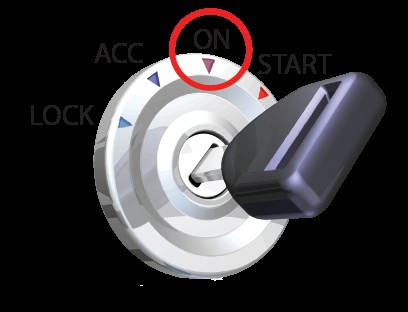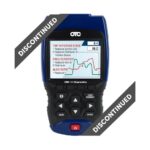Connecting your laptop to your car’s On-Board Diagnostics II (OBD2) port opens up a world of possibilities for vehicle diagnostics, performance monitoring, and customization. Whether you’re a seasoned mechanic or a car enthusiast, understanding how to interface your laptop with your car’s computer is a valuable skill. This guide will walk you through the process of establishing a connection, enabling you to read diagnostic trouble codes, monitor real-time engine data, and much more.
Before you begin, you’ll need a few key components: an OBD2 adapter, compatible software for your laptop, and of course, your laptop and your vehicle. Let’s dive into the step-by-step process.
Step 1: Enabling Bluetooth on Your Windows Laptop or PC
The first step is to ensure your laptop is ready to communicate wirelessly, if you’re using a Bluetooth OBD2 adapter. Most modern laptops come with built-in Bluetooth capabilities.
For laptops with built-in Bluetooth:
Usually, Bluetooth is enabled by default. However, it’s good to verify.
- Click on the Start Menu in Windows.
- Go to Settings (the gear icon).
- Select Devices.
- In the left sidebar, click on Bluetooth & other devices.
- Make sure the Bluetooth toggle is switched to ‘On’.
If you are using a USB-to-Bluetooth adapter, you’ll need to install the drivers provided by the manufacturer. Typically, this involves inserting the adapter and following the on-screen instructions or using an installation CD/downloaded software package. Refer to the adapter’s manual for precise instructions.
Step 2: Locating the OBD-II Diagnostic Connector in Your Car
The OBD2 port is a standardized connector, but its location can vary slightly depending on your car’s make and model. It’s always within the passenger compartment, typically under the dashboard.
Look for the OBD2 port in these common locations:
- Under the steering column: This is the most frequent location. Check directly beneath the steering wheel, near the pedals.
- Below the dashboard on the driver’s side: Explore the area under the dash, near the driver’s knees or to the right of the steering column.
- Behind a small panel or ashtray: Some vehicles conceal the OBD2 port behind a small plastic cover, an ashtray, or a coin tray. You may need to gently pop open a panel or remove a tray to access it.
The connector is usually trapezoidal and features 16 pins. It’s designed to be easily accessible for diagnostic purposes.
Step 3: Connecting Your OBDLink Adapter to the OBD-II Port
Once you’ve located the OBD2 port, it’s time to plug in your OBDLink adapter (or whichever OBD2 adapter you are using).
- Align the adapter with the OBD2 port. It should only fit in one orientation.
- Push the adapter in firmly but gently. You should feel it click or seat securely. Avoid using excessive force.
After plugging in the adapter, observe the indicator lights. For OBDLink devices:
- The ‘Power’ LED should illuminate solid green, indicating it’s receiving power from the car.
- For Wi-Fi models, the ‘Wi-Fi’ LED will typically flash every few seconds to show it’s ready to connect via Wi-Fi.
Step 4: Turning the Ignition to the ‘ON’ Position
To power up the OBD2 system and allow communication, you need to turn your car’s ignition to the ‘ON’ position. Do not start the engine yet.
- Insert your car key into the ignition.
- Turn the key clockwise to the ‘ON’ position. This is usually the position right before you would crank the engine to start. Some vehicles label this position with the Roman numeral ‘II’. If there are no markings, it’s the position where the dashboard lights and electrical systems come on, but the engine is not running.
This step provides power to the OBD2 port and the car’s computer systems, enabling communication with the OBD2 adapter.
Step 5: Making Your OBDLink Discoverable (Bluetooth Pairing)
If you’re using a Bluetooth OBD2 adapter, you need to make it discoverable so your laptop can find and connect to it. For OBDLink adapters, this involves pressing the ‘Connect’ button.
- Locate the ‘Connect’ button on your OBDLink adapter.
- Press and release the ‘Connect’ button.
The ‘BT’ (Bluetooth) light on the OBDLink adapter will start blinking more rapidly. This indicates it is in pairing mode and discoverable by Bluetooth devices.
Important: You typically have a limited time window (around 2 minutes) to complete the Bluetooth pairing process on your laptop after making the OBDLink discoverable. If you need more time, simply press the ‘Connect’ button again on the OBDLink adapter to re-enable pairing mode.
Step 6: Pairing OBDLink with Your Windows Laptop via Bluetooth
Now, switch to your laptop to establish the Bluetooth connection with the OBDLink adapter.
- Open the Windows System Tray: This is usually located in the bottom-right corner of your screen, containing icons for system functions.
- Right-click on the Bluetooth icon in the system tray.
- Select ‘Add a Bluetooth Device’ or ‘Add Device’ from the context menu.
Windows will begin scanning for nearby Bluetooth devices.
- Wait for Windows to discover and display your OBDLink device in the list of available devices. It will likely appear as ‘OBDLink’.
- Click on ‘OBDLink’ in the list.
- Click the ‘Pair’ or ‘Next’ button to initiate the pairing process.
Bluetooth Pairing Code (PIN):
Depending on your Windows Bluetooth adapter, you might encounter a request for a pairing code or PIN.
- Numeric Comparison: Some adapters may show a numeric code on screen and ask you to confirm if it matches the code on the other device. Since OBDLink doesn’t display a code, simply select ‘Yes’ or ‘Confirm’ and click ‘Next’.
- PIN Entry: If prompted to enter a PIN, use ‘1234’. This is the standard PIN for OBDLink devices. Choose the option to enter a PIN if given the choice between PIN entry and pairing without a code.
After successful pairing, Windows will display a confirmation message indicating that the OBDLink device has been successfully connected.
If pairing fails, press the ‘Connect’ button on the OBDLink adapter again and repeat Step 6.
Step 7: Installing OBDwiz Diagnostic Software on Your Laptop
To interact with your car’s data through the OBDLink adapter, you need diagnostic software on your laptop. OBDwiz is a popular software option compatible with OBDLink adapters.
- Download OBDwiz: Visit the official website (or a trusted download source like https://www.scantool.net/scantool/downloads/201/OBDwizSetup.exe) to download the latest version of OBDwiz.
- Run the installer: Locate the downloaded file (usually ‘OBDwizSetup.exe’) and double-click to run the installation program.
- Follow the on-screen instructions to complete the installation of OBDwiz on your laptop.
Before proceeding, ensure:
- You have successfully paired your OBDLink adapter with your Windows laptop via Bluetooth (as outlined in Step 6).
- Your car’s ignition is turned to the ‘ON’ position (Step 4).
Step 8: Initial Software Setup and Adapter Auto-Detection in OBDwiz
Once OBDwiz is installed, you need to configure it to communicate with your OBDLink adapter.
- Launch the OBDwiz application from your desktop or start menu.
- Click the ‘Auto Detect’ button within the OBDwiz software interface. This button is usually prominently displayed.
OBDwiz will automatically scan available communication ports (COM ports) and baud rates to identify and configure itself to work with your OBDLink adapter.
- Wait for the auto-detection process to complete. Once successful, you will see a confirmation dialog box.
Step 9: Establishing Connection to Your Vehicle’s Computer via OBDwiz
With the adapter detected, the final step is to connect OBDwiz to your car’s computer through the OBD2 protocol.
- Click the ‘Connect’ button in the OBDwiz interface.
OBDwiz will then automatically cycle through various OBD2 protocols to detect the one used by your vehicle. A status screen will display the progress of this protocol detection process.
Modern vehicles often have multiple on-board computers (ECUs) connected on the OBD2 network. OBD2 protocol allows connection to only one ECU at a time. OBDwiz may prompt you to choose an ECU.
- If prompted to select an ECU, it’s generally recommended to connect to the ECU reporting the most ‘Supported PIDs’ (Parameter IDs) initially. This ECU usually provides the most comprehensive data. You can always reconnect and select a different ECU later if needed.
- Click ‘Continue’ to finalize the connection.
Step 10: Accessing Vehicle Data and Diagnostics in OBDwiz
Congratulations! You have successfully connected your laptop to your car’s OBD2 port. OBDwiz now provides access to a wealth of diagnostic and performance data.
Explore the capabilities of OBDwiz using the taskbar on the left side of the main screen. You can:
- Diagnose ‘Check Engine’ light issues: Read and clear Diagnostic Trouble Codes (DTCs).
- Monitor real-time vehicle performance: View live data such as engine speed (RPM), coolant temperature, oxygen sensor readings, and more.
- Check emissions readiness: Verify if your vehicle is ready for emissions testing.
- Log trips and data: Record vehicle parameters for later analysis.
Each task in OBDwiz has multiple tabs providing specific information and actions.
Action buttons at the bottom of each tab allow you to perform specific functions related to the selected task and tab.
By following these steps, you can effectively connect your laptop to your car’s OBD2 port and utilize software like OBDwiz to gain valuable insights into your vehicle’s health and performance. This knowledge empowers you to perform your own diagnostics, understand your car better, and potentially save money on professional mechanic visits.

